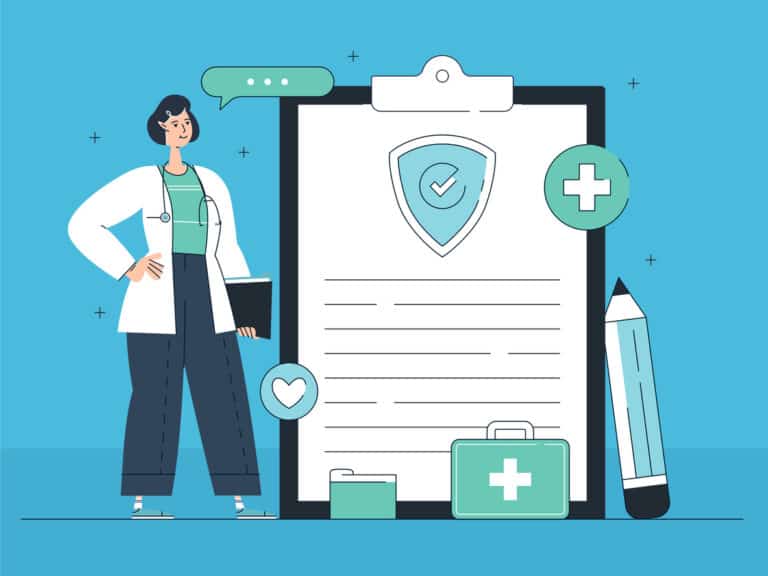Background
The No Surprises Act (the Act) was signed into federal law on December 27, 2020, with the intention of protecting patients from unanticipated medical expenses after receiving care from an out-of-network physician, other health professionals, hospital or other providers. Surprise bills arise in emergencies—when patients typically have little or no say in where they receive care. They also occur in non-emergencies when patients at in-network hospitals, ambulatory surgical centers or other facilities receive care from ancillary providers (such as anesthesiologists) who are not in-network.
Does The Act apply to Your Practice?
The Act applies to all health care providers, which the Centers for Medicare & Medicaid Services (CMS) defines as “a physician or other health care provider who is acting within the scope of practice of that provider’s license or certification under the applicable state law.” In addition to the Act clearly applying to ENT providers, the Academy of Doctors of Audiology and the American Speech-Language-Hearing Association (ASHA) have confirmed that the new regulation does indeed apply to audiology and speech-language providers; however, the provisions only apply to patients without insurance who are self-paying or insurance where the provider is considered out-of-network.
Does Your State Have a Surprise Billing Law?
The No Surprises Act supplements state surprise billing laws; it does not supplant them. The Act instead creates a “floor” for consumer protections against surprise bills. According to The Commonwealth Fund, 18 states offer comprehensive protections against surprise billing, and 15 states offer partial protections. To view an interactive map showing each state, click here. If you are unsure of your state laws, contact your state healthcare authority for guidance.
Balance Billing
While The Act prohibits balance billing for emergency services, balance billing is still allowed for non-emergency care so long as the patient has been given written notice at least 72 hours in advance and they have provided written consent.
CMS has published a Standard Notice and Consent Document related to out-of-network care.
New Disclosure Requirements
The Act requires a new disclosure notice to be publicly available and posted on your practice’s website. Ask your account or regional manager for help branding and printing your signage as well as updating your website; they have access to the approved CMS disclosure content.
- To meet the public disclosure requirements, providers and facilities must prominently display a sign with the required disclosure information in a location of the provider or facility (such as where individuals schedule care, check-in for appointments or pay bills), unless the provider doesn’t have a publicly accessible location.
- To meet the separate requirement to post the disclosure on a public website, the disclosure or a link to the disclosure must be on a searchable homepage of the provider’s or facility’s public website.
CMS has published Instructions for Providers and Facilities related to the Model Disclosure Notice.
Good Faith Estimate
Beginning January 1, 2022, you are required by law to provide a Good Faith Estimate to every new and established patient who is either seeking treatment as a self-pay patient or is considered out-of-network with you as a provider.
Ask your account or regional manager for help branding and printing your Good Faith Estimate form using templates provided by CMS and ASHA.
- CMS Good Faith Estimate for Health Care Items and Services
- ASHA Good Faith Estimate Templates for Audiologists and Speech-Language Pathologists
Beware of Excess Charges
Good Faith Estimate must be within $400 of the actual charge(s) to the individual for the service(s) you provided.
The threshold for “substantially in excess” means that the estimate exceeded the expected charges by at least $400 of what was provided in the Good Faith Estimate.
If this occurs, a patient who is self-paying or not using insurance has the right to challenge the bill through a dispute resolution process. The “substantially in excess” provision applies to the per-visit cost as opposed to the total plan of care cost. For audiology and hearing aids, consider listing your price per visit for the services and your price per visit for each of the individual’s follow-up visits.
The Department of Health & Human Services (HHS) has published a provider guidance document to help in your compliance with the new regulation.
Timing Requirements for Good Faith Estimates
The law stipulates when a patient must receive a Good Faith Estimate. These are largely intended for scheduled in-patient procedures but can also be applied to planned outpatient services.
- If service scheduled at least 3 business days in advance, the Good Faith Estimate must be provided within 1 business day of scheduling.
- If service is scheduled at least 10 business days in advance, the Good Faith Estimate must be provided within 3 business days of the scheduling.
- If an individual requests a Good Faith Estimate, it must be provided within 3 business days.
- If service is scheduled less than 3 business days in advance, a Good Faith Estimate is not required.
We’re Here to Help
Navigating these new requirements clearly requires coordination between your practice’s billing, compliance and legal teams. Reach out to your Regional Manager and Account Manager today for support in creating the required forms and patient disclosures.


